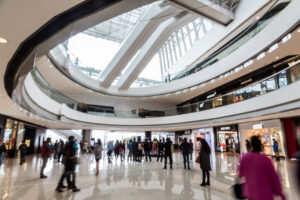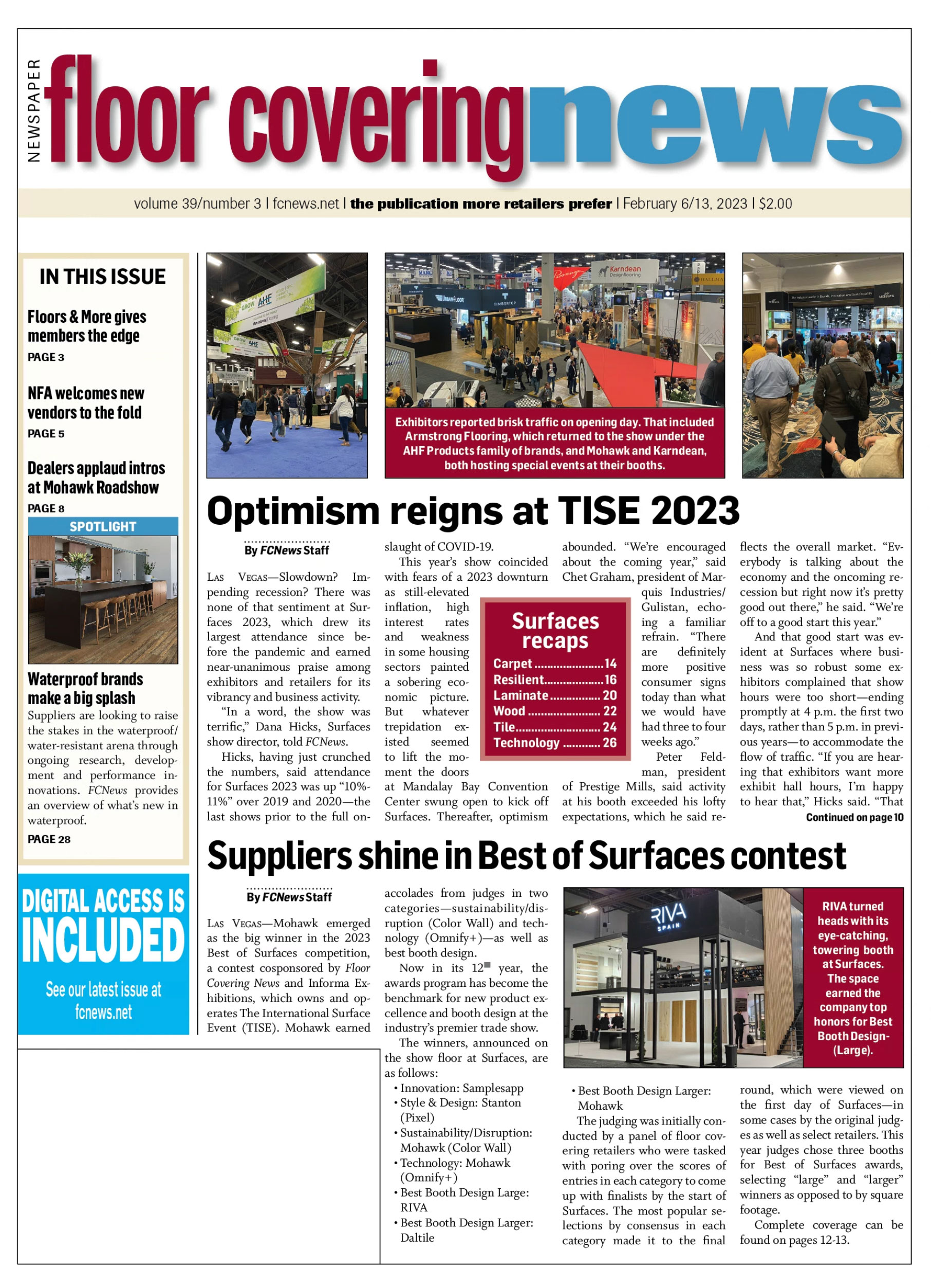 In the weeks and months following the initial outbreak of the pandemic back in 2020, brick-and-mortar dealers (at least those that were authorized to continue operating as “essential” businesses) had to quickly adapt to survive in a strange, new retail environment—the new retail normal. Once-bustling shopping malls seemed eerily deserted; restaurants that managed to keep their doors open were forced to operate on skeleton crews; and entertainment venues such as movie theaters and concert halls—places where people historically gathered in large crowds—lay idle. Whenever and wherever possible, consumers attempted to fulfill their needs for essential goods and services online. Meanwhile, the world was preoccupied with finding ways to survive a virulent pandemic.
In the weeks and months following the initial outbreak of the pandemic back in 2020, brick-and-mortar dealers (at least those that were authorized to continue operating as “essential” businesses) had to quickly adapt to survive in a strange, new retail environment—the new retail normal. Once-bustling shopping malls seemed eerily deserted; restaurants that managed to keep their doors open were forced to operate on skeleton crews; and entertainment venues such as movie theaters and concert halls—places where people historically gathered in large crowds—lay idle. Whenever and wherever possible, consumers attempted to fulfill their needs for essential goods and services online. Meanwhile, the world was preoccupied with finding ways to survive a virulent pandemic.
Along the way to improved and effective therapeutics, experimental medical treatments and, ultimately, a spate of robust vaccines, consumers continued to spend lavishly on creating more comfortable (and functional) environments where they would spend most of their time riding out the early days of the pandemic—at home. This dramatic shift in consumer behavior, coupled with massive stimulus funding provided by the U.S. government in early 2021 and into 2022, turned out to be a boon for many home furnishing retailers and building materials dealers.
What we discovered from that paradigm-changing experience is the incredible resilience of humanity and our innate ability to adapt to unprecedented challenges. On the flip side, it also heightened our sense of fear and paranoia. Some retail businesses required patrons to mask up while shopping; others sought to limit the amount of foot traffic in their stores by shifting to an “appointment-only” structure. (Ironically, some dealers still encourage appointments based on the positive feedback and lessons learned during the pandemic.)
Define normal?
As time wore on, and as more businesses began to reopen and return to some level of “normalcy,” different retail sectors of the market had to redefine what they perceived as normal or, at the very least, the “new normal,” a buzz phrase that has become part of the daily vernacular. For some, the new normal meant employees had to be vaccinated against COVID-19 in order to return to work—a mandate that is no longer required in many regions across the country. For others, the new normal meant strict observance of social distancing in checkout lines—even one-way directional lanes in supermarkets. This, too, has all but faded away—although the plexiglass partitions at many checkout lanes, fast-food venues and even banks remain. Consumers who were once put off by these impersonal barriers seem to be unfazed by them today—the new normal.
As it turns out, the new retail normal differs widely depending on who you talk to. In flooring distribution, for example, it was commonplace pre-pandemic for an ocean container shipment to take at least 30 days to make it to port from its original destination; just a few months ago that same trip took a minimum of six months. For many months it became an acceptable way of life as all parties involved understood the predicament were we in and the complex, international dynamics of importing product. The new normal. While shipping issues have begun to ease somewhat in recent months, it’s certainly not back to pre-pandemic levels. The situation has been further complicated by the war in Ukraine, which is now in its 11th month.
“There are ordinary issues we’ve all dealt with over the years with regards to this aspect—that everyone simply makes minor adjustments and then moves forward,” said Jeff Striegel, president of Elias Wilf, a top 20 distributor. “The best advice during this current environment would be to do as we all have done over the past two- plus years—continue to adjust our expectations to adapt.”
During the height of the crippling shipping delays, Striegel reported that his customers, while frustrated, understood the complexity of the situation and rolled with the proverbial punches. “No matter what my issues have been, my cancellation rate with my customers is less than half a percent on stuff I haven’t shipped for four and five months in some cases,” he said. “At this point in the game, what we’re dealing with are issues that none of us can control or influence.”
Surprisingly, Striegel says the end user—the consumer—has probably done a better job in making the mental adjustment when it comes to dealing with delays in obtaining a host of durable goods products, including flooring. “I have friends who have been waiting 12 weeks for an appliance,” he stated. “They know they have to wait because they can’t get it anywhere else anyway. Consumers have adjusted better than some of the dealers we serve.”
Never mind new, what’s next?
As consumers have reframed their thinking and expectations, retailers need to respond accordingly as well. So says Lisbeth Calandrino, FCNews columnist and former flooring retailer for many years. In her recently revised book, “Red Hot Customer Experience—Challenges Your Business Will Face in the Next Normal,” she seeks to answer the question, ‘Is there a universal new normal?’ “Retailers will need to adjust accordingly to meet the customer who’s in the market for flooring and take it from there,” she noted. “If you don’t determine your own path, it will likely be defined by the stronger competitors in your market.”
In other words, it’s time to get to know your customers better, inside and out, and be there for them throughout the flooring purchasing journey. For example: “During normal business hours you can answer their questions, but what about when you’re closed? Does your customer expect 24-hour service? This is the double-edged sword that we call technology. Technology has taught consumers to expect a frictionless experience with every transaction.”
It’s all about the experience
The pandemic, Calandrino noted, has forced retailers across the board to go back to the basics and focus more of their attention of creating a memorable experience for the consumer. “In order to do this effectively,” she writes, “you’ll need to identify your competitive advantage and your niche in the target market. Find out whatever you can about your competitors. Anyone who’s not spending it with you is spending it with the competition.”
Of course, the new normal mode of operating might differ from one retailer to the next or from one market to another. That makes it somewhat of a moving target. “I’m of the opinion that it’s up to us as individuals to decide what the ‘next normal’ looks like,” Calandrino stated. “The same goes for business owners.”
One thing that remains consistent, she added, is the customer experience will remain at the forefront of their purchasing decisions. “You’re not alone,” is Calandrino’s message for dealers. “Your competition is feeling the same pressures. But instead of caving into those pressures, use this time as an opportunity to get closer to the customer by better understanding her needs, wants and expectations.”
Emerging trends
In a recent study titled “The COVID-19 Era Retail Environment,” Deloitte, the well-known consulting and advisory firm, suggested that the pandemic has created a long-term shift in the retail industry. Following are some of the trends Deloitte sees emerging:
- Product mix will likely change, forcing retailers to forge new partnerships in order to thrive.
- Consumer-retailer transactions will be defined by health and safety expectations.
- Demands for convenience will drive even more contactless transactions.
- Retailers will depend increasingly on the trust they have with consumers and other stakeholders.
Those observations were echoed by TotalRetail, an e-news industry resource, which early on in the pandemic provided retail survival recommendations that proved to be extremely prescient. In his article, “5 Strategic Imperatives for Retail’s New Normal,” author David Gottlieb, managing director—Americas at Trax, stressed the need for dealers to better understand new shopper behaviors post-COVID-19. He also predicted that the role of the traditional brick-and-mortar store would need to be tangibly redefined in order for retailers to come out successfully on the other side of the pandemic.
“To thrive post-crisis, retailers and manufacturers must focus on customer needs, redefine their store strategy, enable their workforces and integrate technology to accelerate access to information that will drive sales and keep products on shelves,” he stated.
Flooring industry importers that have managed to thrive throughout the pandemic agree. Paul Dominie, president of sales and marketing at Bella Flooring Group, a major supplier of LVT, SPC, moldings and transitions, for example, put it this way: “One of the many things that remain present in any industry is the importance of listening to the needs of our customers. A customer’s concerns are rarely the same; they are forever changing. As technology and new products continue to develop, we must devote extra time to listen to our customers and act in a manner that benefits their needs.”

